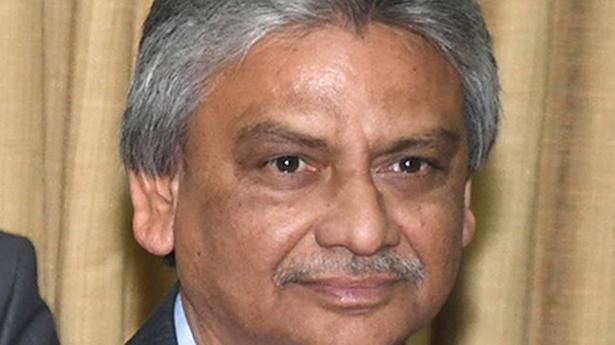Conflict’s contagion may impact India through broader fallout, says RBI’s Patra
Mumbai
India’s growth story remains as weak as it was at the time of the 2013 taper tantrum and the recent reverberations of war [Russia’s invasion of Ukraine] have tilted the balance of risks downwards, Reserve Bank of India (RBI) deputy governor Michael Debabrata Patra said on Friday.
Observing that the direct trade and finance exposures to the ongoing conflict were limited for India, Dr. Patra said: “Contagion could, however, impact India through a broader fall out on EMEs as an asset class”.
“The main transmission channel is likely to be global liquidity conditions, which are tightening. If worry were to give way to panic, liquidity, especially U.S. dollar funding, could dry up and markets could malfunction. With crude oil still above $100 per barrel, new macroeconomic headwinds could be a second channel of contagion. A third channel could be the reassessment of geopolitical risk by markets and investors, which could inflate country-risk premiums, raise the cost of funding for EMEs and reduce investment volumes,” he added, in his keynote address “Taper 2022: Touchdown in turbulence” at IMC Chamber of Commerce & Industry in Mumbai.
Noting that the RBI had last month projected economic growth in 2022-23 at 7.8%, he said the breakout of hostilities in Ukraine and its fallout was, however, likely to necessitate a review.
“The choice of a bimonthly meeting cycle for the Monetary Policy Committee (MPC) ensures that this will be done… in the forthcoming meeting in April,” he said.
He said geopolitical conflict had drastically altered the global environment and the context in which monetary policy operates.
“As investors re-assess risks and sizable reallocations appear imminent, there is no clarity on the direction and magnitude of capital flows for any specific country,” he said.
Meanwhile, persisting global supply chain disruptions, resurgent commodity prices and volatility in financial markets were distracting policy attention from domestic concerns.
Observing that international crude prices presented an overwhelming risk to the outlook for inflation, Dr. Patra said there was headroom to adjust excise duties that in turn could delay the pass-through to pump prices.
“On the other hand, prospects for the easing of food inflation remain bright with record production and buffer stocks,” he said.
“Strong supply-side interventions and increase in domestic production can check inflation-sensitive pulses and edible oil prices, though spillovers from the geopolitical situation cannot be ruled out,” he added.
Emphasising that the policy stance had to be carefully calibrated, he said the monetary policy remained in accommodative mode and continued to engender financial conditions that were supportive of growth.
“Even though fiscal consolidation is underway, there is still some stimulus in the economy that will last through 2022-23, as estimates of the fiscal impulse suggest,” he said.
“While the fallout of the geopolitical situation is being assessed and will be factored into our projections, it is reasonable to treat it as a supply shock at this stage in the setting of monetary policy,” he added.
“Private sector estimates indicate that if the price of crude rises to $150 per barrel, it will knock off another 1.6% of global GDP, while raising global inflation by another 2%,” Dr. Patra noted.
For all the latest business News Click Here

